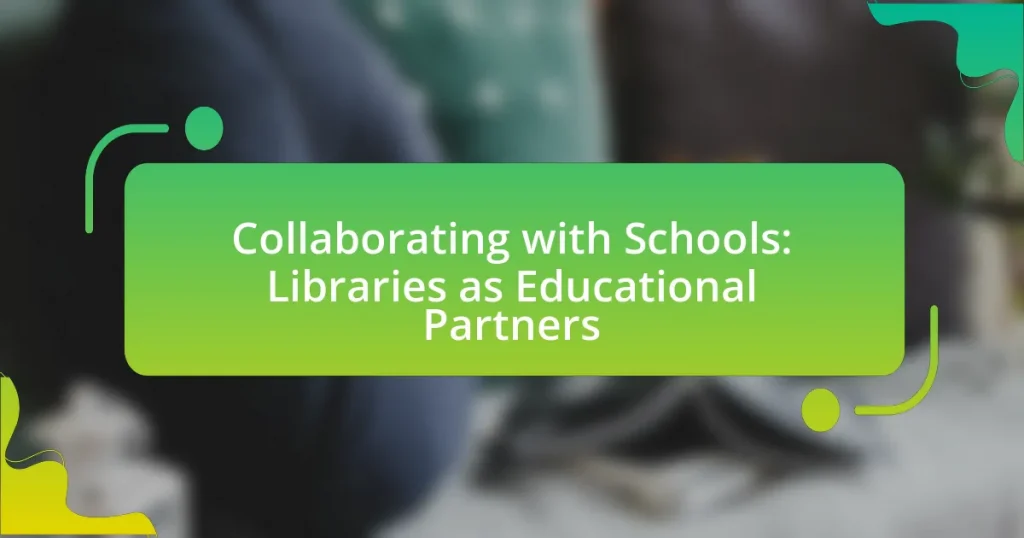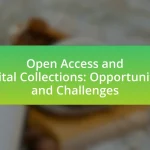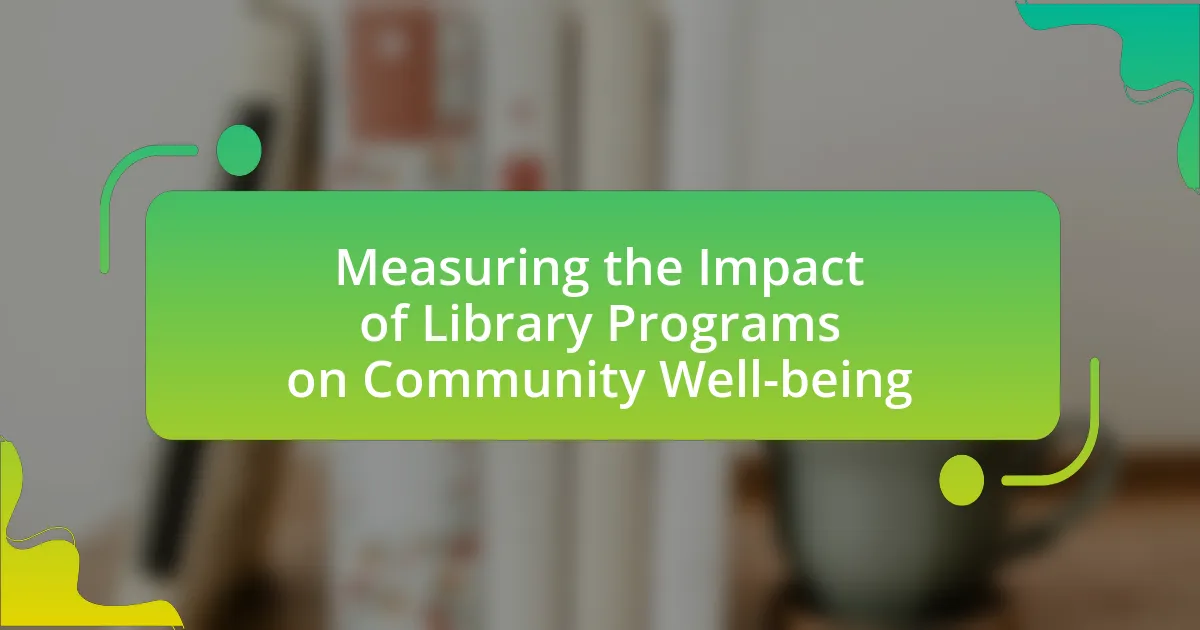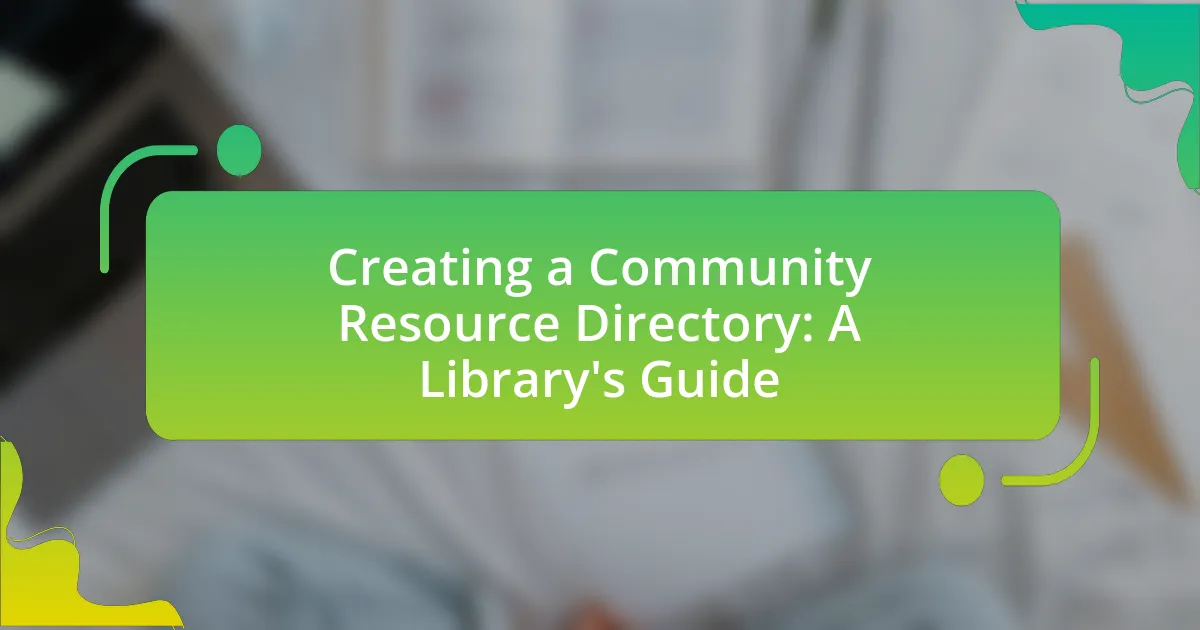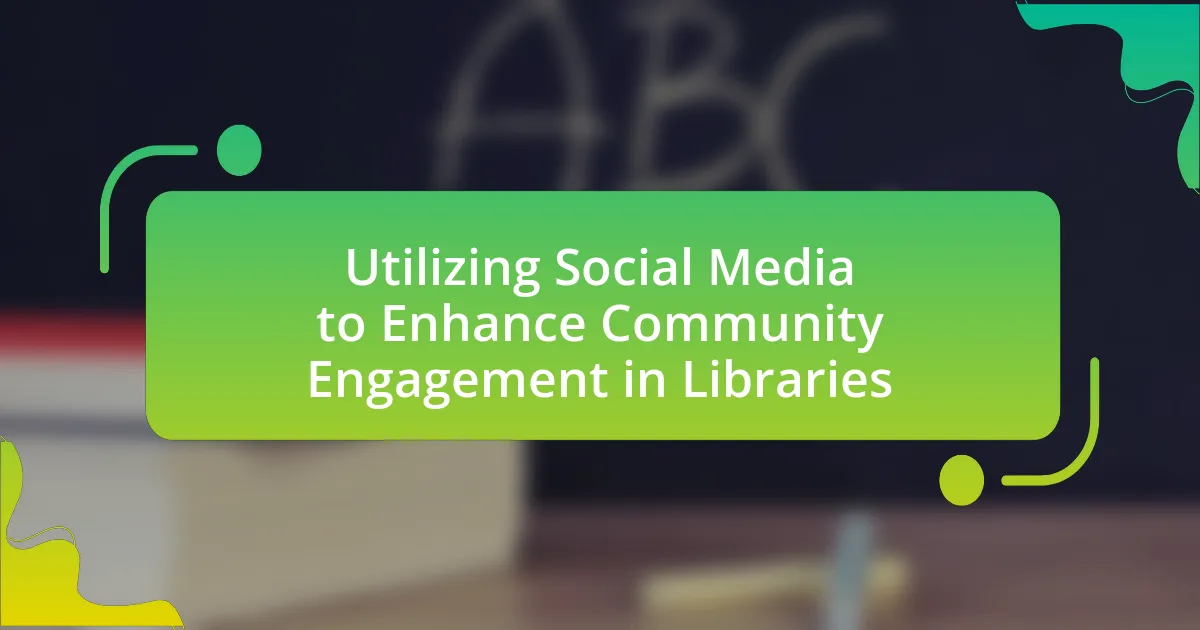The article focuses on the collaboration between libraries and schools, emphasizing libraries as essential educational partners. It outlines how these partnerships enhance the educational experience by providing diverse resources, fostering critical thinking, and supporting curriculum development. Key topics include the benefits of library resources for student learning, strategies for effective collaboration, and the impact of these partnerships on community engagement and academic performance. Additionally, the article addresses challenges libraries face in collaborating with schools and offers best practices for maintaining long-term partnerships.

What does it mean to collaborate with schools as educational partners?
Collaborating with schools as educational partners means working together to enhance the educational experience and outcomes for students. This partnership typically involves sharing resources, expertise, and strategies to support curriculum development, improve student engagement, and foster a love for learning. For instance, libraries can provide access to diverse materials and programs that align with school objectives, thereby enriching the educational environment. Research indicates that such collaborations can lead to improved academic performance and increased student motivation, as evidenced by studies showing that schools with strong community partnerships often see higher test scores and graduation rates.
How can libraries enhance the educational experience in schools?
Libraries enhance the educational experience in schools by providing access to diverse resources, fostering critical thinking, and supporting collaborative learning. They offer a wide range of materials, including books, digital media, and research databases, which cater to various learning styles and interests. Research indicates that students who utilize library resources perform better academically; for instance, a study by the American Association of School Librarians found that schools with well-funded libraries see higher student achievement scores. Additionally, libraries often host programs and workshops that encourage collaboration among students and teachers, promoting a culture of inquiry and exploration. This collaborative environment not only enriches the curriculum but also helps develop essential skills such as information literacy and teamwork.
What resources do libraries provide to support school curricula?
Libraries provide a variety of resources to support school curricula, including access to books, digital media, databases, and educational programs. These resources enhance learning by offering students a wide range of materials that align with their academic needs. For instance, libraries often curate collections that reflect the curriculum, providing textbooks, reference materials, and supplementary reading that support classroom instruction. Additionally, many libraries offer online databases that include academic journals, articles, and primary sources, which are essential for research projects and assignments. Educational programs, such as workshops and tutoring sessions, further assist students in developing critical skills and knowledge relevant to their studies.
How do libraries facilitate access to information for students and teachers?
Libraries facilitate access to information for students and teachers by providing a wide range of resources, including books, digital media, and databases. These resources are essential for research, learning, and teaching. For instance, many libraries offer online databases that contain academic journals and articles, which are crucial for students and educators seeking credible information. Additionally, libraries often host workshops and training sessions that teach information literacy skills, enabling users to effectively locate and evaluate information. According to the American Library Association, 90% of teachers reported that school libraries positively impact student learning by enhancing their access to information.
Why is collaboration between libraries and schools important?
Collaboration between libraries and schools is important because it enhances educational resources and supports student learning. Libraries provide access to diverse materials and information literacy skills, which complement the curriculum taught in schools. Research indicates that students who engage with library resources perform better academically; for instance, a study by the American Association of School Librarians found that schools with strong library programs see higher student achievement scores. This partnership fosters a culture of reading and inquiry, equipping students with critical thinking skills essential for their future success.
What are the benefits of library partnerships for student learning?
Library partnerships enhance student learning by providing access to diverse resources, expert guidance, and collaborative programs. These partnerships facilitate information literacy, critical thinking, and research skills through tailored workshops and activities designed to meet curriculum needs. For instance, a study by the American Association of School Librarians found that schools with strong library partnerships reported improved student engagement and academic performance, highlighting the positive impact of these collaborations on educational outcomes.
How do these collaborations impact community engagement?
Collaborations between libraries and schools significantly enhance community engagement by fostering educational partnerships that benefit students and families. These partnerships create opportunities for joint programs, such as literacy initiatives and after-school activities, which directly involve community members in the educational process. For instance, a study by the American Library Association found that libraries that collaborate with local schools see a 30% increase in community participation in educational events. This increase in engagement not only strengthens the relationship between libraries and schools but also promotes a culture of learning within the community, making educational resources more accessible to all.

What strategies can libraries employ to collaborate effectively with schools?
Libraries can collaborate effectively with schools by establishing partnerships that integrate library resources into the school curriculum. This can be achieved through joint programming, such as co-hosting literacy events, workshops, and author visits that align with educational goals. Additionally, libraries can provide access to digital resources and databases that support classroom learning, ensuring that both students and teachers have the necessary tools for research and study.
Evidence of successful collaboration can be seen in programs like the “School Library Partnership” initiative, which has demonstrated improved student engagement and academic performance through shared resources and collaborative projects. Such partnerships not only enhance the educational experience but also foster a culture of lifelong learning among students.
How can libraries develop partnerships with local schools?
Libraries can develop partnerships with local schools by initiating collaborative programs that align with educational goals. These programs can include joint literacy initiatives, resource sharing, and co-hosted events such as author visits or reading challenges. For instance, a study by the American Library Association found that schools with active library partnerships reported improved student engagement and literacy rates. By establishing regular communication with school administrators and teachers, libraries can identify specific needs and tailor their offerings to support curriculum objectives, thereby fostering a mutually beneficial relationship.
What steps should libraries take to initiate collaboration?
Libraries should first identify potential partners, such as local schools, to initiate collaboration. This involves conducting outreach to understand the needs of the educational institutions and how library resources can support their curriculum. Next, libraries should establish clear communication channels with school administrators and educators to discuss mutual goals and objectives. Additionally, libraries can organize joint events or programs that align with educational standards, thereby demonstrating their value as educational partners. Evidence of successful collaborations can be found in case studies where libraries have improved student engagement and learning outcomes through targeted programs, such as literacy initiatives or STEM workshops.
How can libraries identify the needs of schools for effective partnership?
Libraries can identify the needs of schools for effective partnership by conducting needs assessments through surveys, interviews, and focus groups with educators and administrators. These assessments help libraries gather specific information about curriculum requirements, resource gaps, and areas where library services can enhance educational outcomes. For instance, a study by the American Association of School Librarians found that schools with active library partnerships reported improved student engagement and academic performance, highlighting the importance of aligning library resources with school needs.
What programs can libraries offer to support school initiatives?
Libraries can offer various programs to support school initiatives, including literacy programs, STEM workshops, and after-school tutoring sessions. Literacy programs enhance reading skills through storytime events and book clubs, fostering a love for reading among students. STEM workshops provide hands-on learning experiences in science, technology, engineering, and mathematics, often aligning with school curricula to reinforce classroom learning. After-school tutoring sessions offer personalized academic support, helping students with homework and study skills, which can lead to improved academic performance. These programs not only enrich the educational experience but also strengthen the partnership between libraries and schools, contributing to community educational goals.
How do reading programs enhance literacy in collaboration with schools?
Reading programs enhance literacy in collaboration with schools by providing structured support and resources that complement classroom instruction. These programs often include tailored reading materials, professional development for educators, and community engagement initiatives that foster a love for reading among students. Research indicates that schools partnering with libraries for reading programs see improved literacy outcomes; for example, a study by the Institute of Museum and Library Services found that students participating in library-led reading initiatives scored higher on standardized reading assessments compared to their peers. This collaboration not only enriches the educational environment but also promotes lifelong reading habits, ultimately leading to greater academic success.
What role do workshops and training sessions play in library-school partnerships?
Workshops and training sessions are essential components of library-school partnerships, as they facilitate the development of collaborative skills and enhance educational resources. These sessions provide teachers and librarians with the opportunity to share best practices, integrate library resources into the curriculum, and improve information literacy among students. Research indicates that when librarians and educators engage in joint training, it leads to a more cohesive educational environment, ultimately benefiting student learning outcomes. For instance, a study by the American Association of School Librarians found that schools with active librarian-teacher collaboration reported higher student achievement in literacy and research skills.
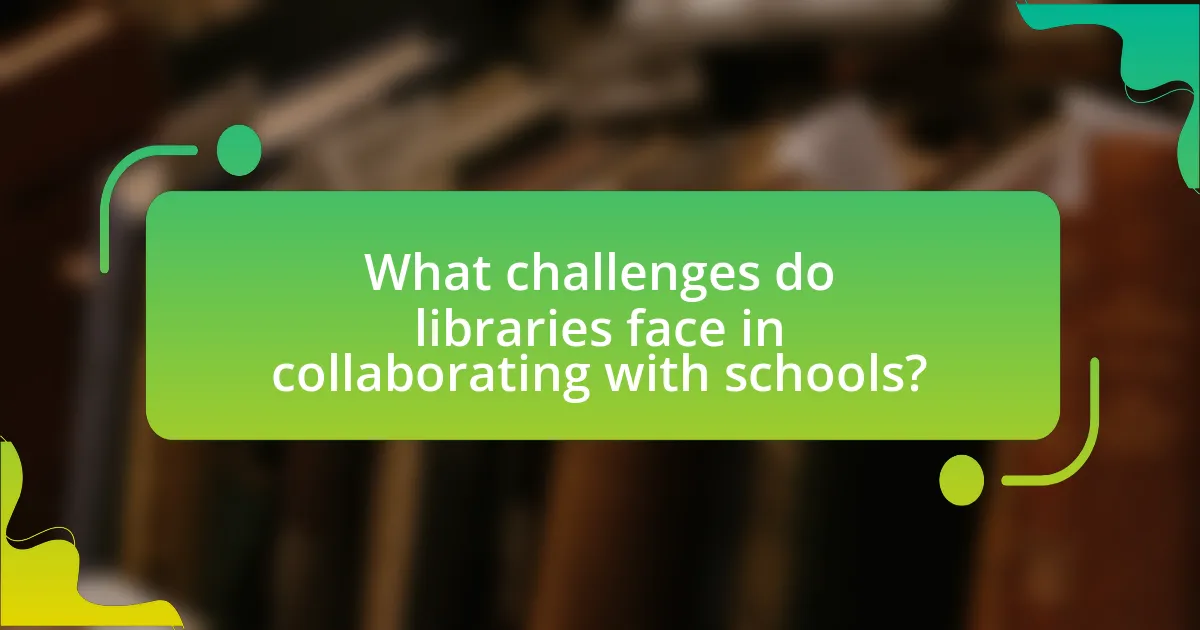
What challenges do libraries face in collaborating with schools?
Libraries face several challenges in collaborating with schools, primarily including resource limitations, differing priorities, and communication barriers. Resource limitations often manifest as insufficient funding or staffing, which restricts libraries’ ability to provide adequate support for educational programs. Differing priorities arise when schools focus on standardized testing and curriculum requirements, while libraries may emphasize information literacy and broader educational goals. Communication barriers can hinder effective collaboration, as misunderstandings about roles and expectations may lead to fragmented partnerships. These challenges can impede the development of cohesive educational initiatives that leverage the strengths of both libraries and schools.
How can libraries overcome barriers to effective collaboration?
Libraries can overcome barriers to effective collaboration by establishing clear communication channels and fostering relationships with educational institutions. By implementing regular meetings and collaborative projects, libraries can align their resources with the needs of schools, ensuring that both parties understand each other’s goals. Research indicates that partnerships between libraries and schools enhance student learning outcomes, as evidenced by a study from the American Association of School Librarians, which found that schools with strong library partnerships reported higher student engagement and academic performance.
What are common misconceptions about libraries in educational settings?
Common misconceptions about libraries in educational settings include the belief that libraries are solely for book lending and that they are outdated in the digital age. Many people think libraries only serve as storage for physical books, overlooking their role as dynamic learning environments that provide access to digital resources, technology, and collaborative spaces. Additionally, some assume that libraries are only for students who struggle academically, while in reality, they support all students by fostering research skills, critical thinking, and information literacy. Research indicates that schools with active library programs see improved student performance, highlighting the essential role libraries play in modern education.
How can libraries address funding and resource limitations?
Libraries can address funding and resource limitations by forming strategic partnerships with schools and community organizations. These collaborations can lead to shared resources, joint programming, and increased funding opportunities through grants and sponsorships. For instance, a study by the American Library Association found that libraries that engage in partnerships with educational institutions often see a 20% increase in funding through collaborative grant applications. Additionally, libraries can leverage community support by hosting fundraising events and engaging volunteers, which can further enhance their resource availability.
What best practices can libraries adopt for successful collaboration?
Libraries can adopt several best practices for successful collaboration, including establishing clear communication channels, defining shared goals, and engaging in regular evaluation of collaborative efforts. Clear communication ensures that all stakeholders are informed and aligned, while defining shared goals fosters a common purpose that guides collaborative activities. Regular evaluation allows libraries to assess the effectiveness of their partnerships and make necessary adjustments, enhancing the overall impact of their collaborative initiatives. These practices are supported by research indicating that effective collaboration leads to improved educational outcomes and resource sharing, as evidenced by studies conducted by the American Library Association, which highlight the positive effects of library-school partnerships on student learning.
How can libraries measure the impact of their partnerships with schools?
Libraries can measure the impact of their partnerships with schools through various quantitative and qualitative metrics. These metrics include tracking student engagement levels, analyzing usage statistics of library resources by students, and conducting surveys to gather feedback from educators and students about the effectiveness of the partnership. For instance, a study by the American Library Association found that schools with strong library partnerships reported a 20% increase in student literacy rates, demonstrating a direct correlation between library involvement and educational outcomes. Additionally, libraries can assess the number of collaborative programs initiated, attendance at events, and the frequency of resource utilization to further quantify their impact.
What tips can libraries follow to maintain long-term collaborations with schools?
Libraries can maintain long-term collaborations with schools by establishing clear communication channels and aligning their resources with the educational goals of the schools. Regular meetings between library staff and school administrators can facilitate the sharing of ideas and needs, ensuring that library services support curriculum requirements. Additionally, libraries should offer tailored programs and resources that directly address the interests and academic needs of students, such as workshops, reading programs, and access to digital resources.
Evidence shows that partnerships between libraries and schools enhance student learning outcomes; for instance, a study by the American Association of School Librarians found that schools with strong library programs see improved student performance in reading and research skills. By actively engaging with educators and adapting to their feedback, libraries can foster a collaborative environment that benefits both students and teachers, thereby solidifying long-term partnerships.
